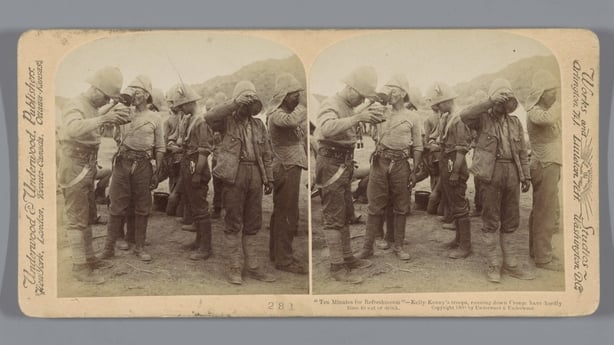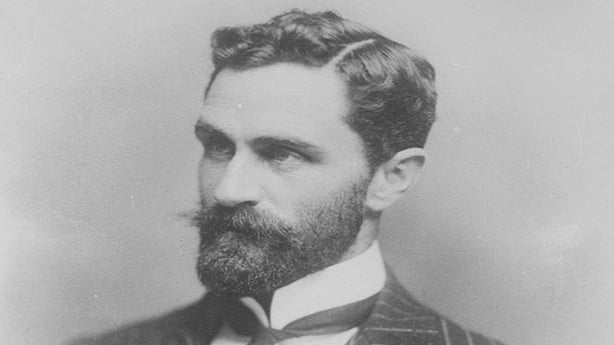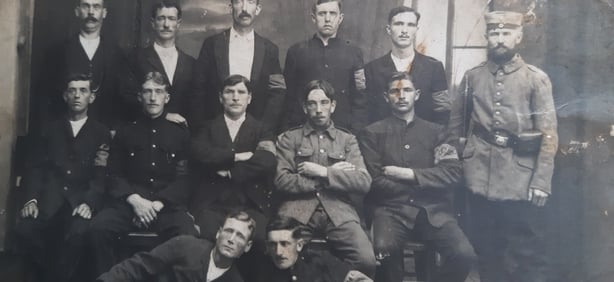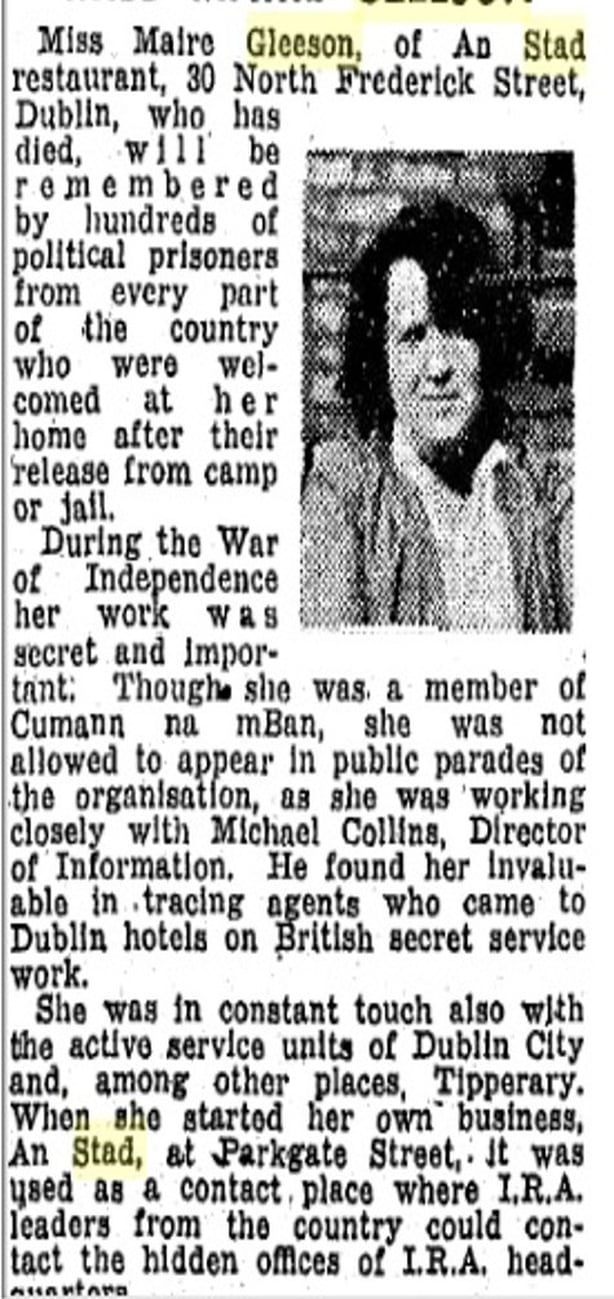When James Gleeson died in 1964, his north Dublin neighbours had no idea that this quiet man had been a soldier in the Boer and First World Wars - and had been a POW in a German camp that was visited by Roger Casement. And while James was in the British Army, his sister was working for the IRA. James's grandson Paul Scully tells their story
On November 4th, 1896 my Grandfather James Gleeson, age 18 and standing at five foot three inches, walked from his home in Hospital, County Limerick to Clonmel, County Tipperary to enlist in the British army. He was the oldest boy from a family of six children, leaving behind two brothers and three sisters.
At his medical examination, he was found to be below the required height so he returned later the following month and was attested in the British army on Christmas Eve and then posted to the Depot, Royal Irish Regiment, that St Stephens day. He was following in the footsteps of my great-grandfather Malachy Gleeson who had also enlisted and served for a period of ten years in various parts of the world including Kefalonia, Gibraltar, China, and Japan. While in Japan, Malachy Gleeson and several members of the 9th of Foot (Infantry regiment) suffered an eye disease that forced his discharge after ten years, nine and a half of which he had served overseas.
After three years 'home service', James Gleeson and his then unit, the first Battalion Royal Irish Regiment arrived in South Africa on October 23rd, 1899, to deploy as reinforcements for the British army, which was engaged in what was known as the second Boer War.

While serving in what is now South Africa, Gleeson first saw action on February 15th, 1900 at the diamond mining town called Kimberley and after a 124-day siege the town was ‘relieved’ but the battle against the Boers continued two days later at Paardeberg (Horse Mountain) on the banks of the Modder River.
Over the next four months he would take part in the following battles: Dreifontein, Johhannesburgh and lastly Diamond Hill which was fought over the two days of June 11th and 12th, 1900. Peace was concluded with the Boers in June 1902 but he would remain in South Africa for a further three years until January 1905 when the 1st Battalion entrained for Durban, a rail journey taking two days before boarding the SS Avoca and landing at Calcutta, India, nineteen days later. The Battalion again moved by train to Rawalpindi, arriving February 15th, 1905.
He would remain in India for another five years serving at Masseriore, the Muree Hills and Upper Toppa in Kashmir (present day Pakistan) and finally Aggra where he contacted Malaria before departing India in 1911, after a total of twelve years abroad.
The First World War
Following a relatively ‘quiet’ 3-year period James Gleeson was posted to the 2nd Battalion who left their base in Devonport and moved back overseas to Boulogne on August 13th, 1914. The next day they were mobilised for war at the outbreak of World War 1. It was not long before they were back into battle and on August 23rd, 1914, B Company were fighting a rearguard action at Mons and James was wounded in the head and was subsequently listed as missing in action. His Mother Mary Gleeson nee Sheehy was notified back home in Ireland and as time went by, he was presumed dead.
Enter Roger Casement
In October 1914 Roger Casement travelled to Berlin from the United States with the aim of seeking special concessions for the Irishmen who were fighting for the British army and who were at that point prisoners of war in Germany. Casement successfully appealed that they be moved to a special camp where the regime would be less punishing.

This was agreed officially on November 2nd, and by that Christmas 1914 an estimated 2,200 Irishmen were moved to Limburg prisoner of war camp approximately 50 miles north west of Frankfurt. James Gleeson was one of those Irish prisoners, having had been taken prisoner of war (POW) by German forces on August 24th.
Casement visited the camp several times and conditions there were considered good and a marked improvement from those other POW camps that some of the soldiers had spent their previous three to four months. On December 23rd, 1914, Casement signed an agreement with the German Foreign Office in which it was stated that Germany would supply arms and ammunition to Irish Republicans along with along with a pledge to support an independent Irish Government. It was also agreed that an Irish Brigade be formed from the ranks of the Irish prisoners that would serve with the German army.

It has been estimated that 55 or 56 of the prisoners eventually agreed to serve in this Irish 'Brigade', James Gleeson was not one of them although a fellow Limerick man from Gleeson’s Regiment had signed up and would later fight for the German army in Egypt and then in 1921, become a member of an IRA Flying Column during the Irish War of Independence.
Prison life at the camp alternated between good and bad with evidence that the regime there was instructed to punish the vast majority of prisoners who had refused to enlist in what was the fiasco of the so-called Irish Brigade.
Back to Ireland
Gleeson spent four years in Limburg POW camp and four months after WW1 ended in November 1918, James was discharged from the British Army on March 15th, 1919 in Cork, after having served over 22 years. He travelled back to Hospital in Limerick and he married his next-door neighbour, Josephine Ferns in Kilmallock, County Limerick in 1921 and they later moved to Dublin where he worked as a porter. James and Josephine went on to have three children, one of which was my Mother Maureen in 1926.
His sister Maire Gleeson, or Mollie as she was known to her comrades, was also living in the city and had moved to Dublin in June 1916 following the Easter rising. On her arrival in Dublin, she had immersed herself in ‘National work’.

Mollie Gleeson had dedicated her adult life to the Nationalist cause and counted among her close friends the IRA Chiefs McBride, Lehane and Fitzpatrick along with 3rd Tipperary Brigade leaders Dan Breen and Sean Treacy. During the War of Independence, she worked closely with IRA GHQ Intelligence staff and at times directly for its director Michael Collins. Mollie also devoted much of her time helping out ‘her boys’ in the 3rd Tipperary IRA Brigade.
After the treaty and the ‘split’ she took the anti-treaty side and continued her involvement up until her death in February, 1949. When she died James was one of the chief mourners at his sister's funeral along with Sean MacBride, the son of Maud Gonne and John MacBride who coincidentally raised the Irish Transvaal Brigade and fought with the Boers against the British army in the second Boer war from 1899 to 1902. Molly’s coffin was draped in the Tricolour and paraded through the city.
James Gleeson died in February in 1964 and is buried in Deansgrange Cemetery about 150 metres away from where his sister Maire is buried with my Grandmother Josephine and my Uncle Malachy.
I never met my grandfather and my mother never spoke much about him to me but a few years ago I met someone who had known him from her childhood in Whitehall, in Dublin’s Northside. When I told her his story, she was flabbergasted and told me that he was such a small, quiet, and respectful man. She also said that she did not think anybody in the area of Larkhill ever knew he had served in the army!
Do you have a story to tell about your own family's experience of significant historical events? Find out how to contribute it here.
The views expressed here are those of the author and do not represent or reflect the views of RTÉ










































